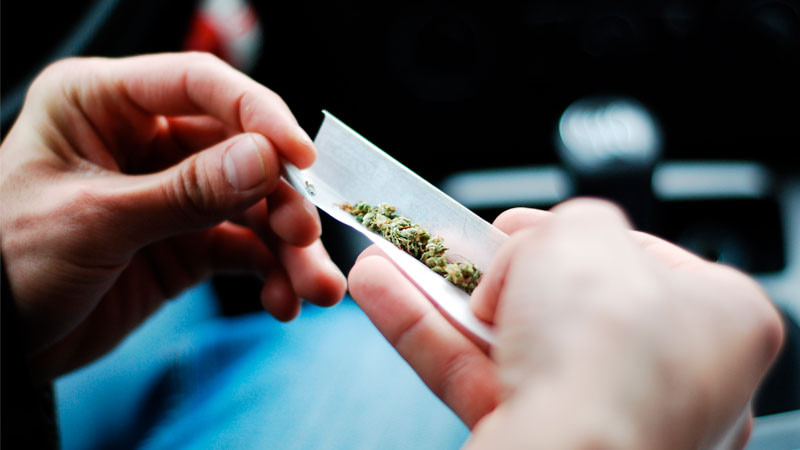
When a prosecutor charges someone with possession of marijuana, they’ll generally also charge possession with the intent to deliver (PWID) if the weight is over a particular amount. It’s a big deal, because possession with intent to deliver is a felony with a maximum possible penalty of four (4) years in jail. If the weight is over 45 kilograms, the maximum penalty is 15 years.
Regular possession is a misdemeanor, which is subject to dismissal after probation for first time offenders. PWID is not. So, a really important question is:
What is that weight amount necessary to be charged with the felony offense of possession of marijuana with the intent to deliver?
The answer is, generally, an amount that exceeds what is reasonable for personal use. Anything over that amount is assumed to be for someone else. That can be a very speculative assumption given the following considerations.
Charged with possession with intent to deliver marijuana or another drug? Unhappy with your current attorney? Request a free consultation now.
When Growing Marijuana, It’s Easy to Grow Too Much But Hard to Throw Away
When I was growing up, my father used to grow vegetables in our backyard. While in season, we always had an abundance of cucumbers, tomatoes and strawberries, just to name a few. It wasn’t always clear how much our family would consume. It was frequent that we had extra. We never threw it away unless we had to.
The same can be said for marijuana. A medical marijuana patient can grow up to 12 plants without penalty or prosecution. A caregiver can grow up to 72 plants. Each patient may only be in possession of 2.5 ounces at one time, pursuant to the Michigan Medical Marijuana Act (MMMA). The amount harvested for even six plants can easily produce an amount that exceeds 2.5 ounces. The patient or caregiver not throwing it away immediately certainly doesn’t mean they have the intent to deliver it to another person.
Even if a person is not a medical marijuana patient or caregiver, growing your own marijuana can still lead to a large amount harvested. It doesn’t automatically mean there’s intent to deliver.
The THC in Marijuana Can Be Extracted Into Legally Defensible Amounts
Not everyone wants to smoke flower. There’s a significantly vast market and demand for alternative forms of cannabis ingestion and products. These products include candies, baked goods, soft drinks, waxes, oils and vapors. The MMMA was amended in December of 2016 to include THC extracts as usable marijuana.
For instance, once ounce of marijuana flower will equate to 36 fluid ounces of THC in liquid form. Therefore, a patient or caregiver can be in possession of 90 ounces of THC oil. This is almost three quarts.
Extraction experts say they will usually get an ounce of fluid for every ounce of flower. If true, a person could be in possession of about five-and-a-half pounds of marijuana with the intent to extract it, which is a defensible amount of usable medial marijuana. Solid forms of marijuana, like a brownie, will be calculated differently. If an average brownie weighed 25 grams, a patient could lawfully be in possession of about 45 brownies.
Charged with possession with intent to deliver marijuana or another drug? Unhappy with your current attorney? Request a free consultation now.
Marijuana That Has Been Deemed Unsafe and Therefore, an Intent to Destroy is Legitimate
Marijuana grown and harvested in poor conditions is susceptible to harmful microbiological and pest contamination. Mold, mildew and pathogens, including salmonella, can ruin entire marijuana harvests. Should a person not destroy this harvest before being found in possession, the police may allege there was an intent to deliver when there was actually an intent to destroy.
Sometimes, it’s important to have the marijuana chemically tested immediately after seizure.
Possession of Packing Material and Scales Does Not Automatically Mean Intent to Deliver
Marijuana is usually purchased by weight. It’s therefore completely reasonable for a person to be in possession of a scale at their home, or even vehicle in order to weigh the marijuana to ensure they received the weight they purchased. A scale is also used to weigh the correct amount of medicine to be consumed.
Unfortunately, police and prosecutors view possession of a scale the other way. They automatically believe that possession of a scale automatically means that there’s an intent to sell or distribute. Good thing most jury members aren’t prosecutors. As long as there’s a reasonable explanation for being in possession, their intent to deliver argument is significantly limited.
Packaging is also a very common product of which marijuana users are in possession. I have a food saver in my kitchen. It’s been there for over 10 years. To the police, I must be using it to package marijuana for sale and money for smuggling. My wife and children would easily beg to differ. We use it for the purpose for which it was intended: to save our food.
Police and prosecutors try to twist evidence to fit their theories, but that does not mean those theories are true and reasonable. We can let a jury decide or rather, a good defense attorney should be able to persuade them otherwise.
Charged with possession with intent to deliver marijuana or another drug? Unhappy with your current attorney? Request a free consultation now.
